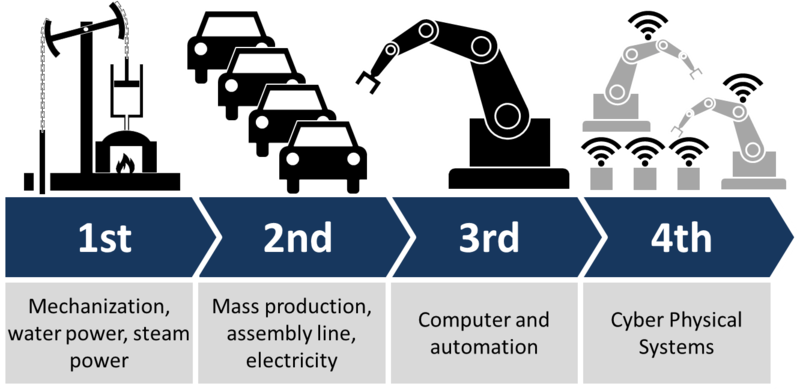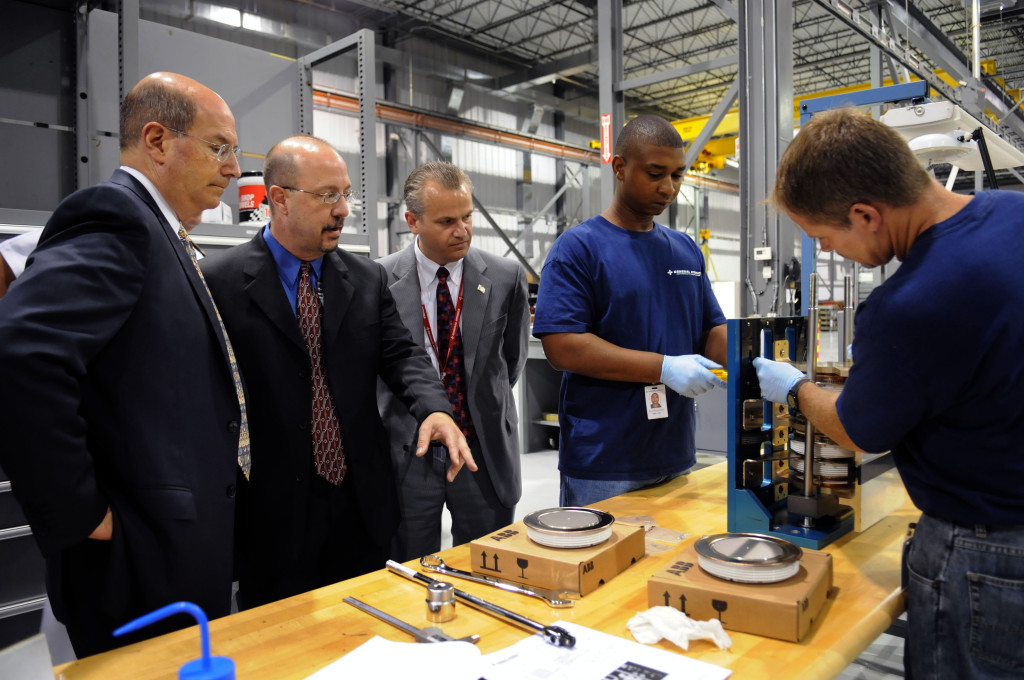
Image Source: Wikimedia
The global manufacturing industry is looking to the future now more than ever. Manufacturing specific technologies are advancing at a rapid rate bringing on Industry 4.0 making the time for innovation now.
This idea of a connected manufacturing environment has been around for many years, but it seems that constant innovation in recent years has finally brought it close to reality. As manufacturing plants and manufacturers become more connected, the next industrial revolution will approach at full speed.
However, this revolution is going to be different.
The last 3 industrial revolutions took place with linear improvements on the innovation continuum. The difference here is that these last revolutions were machine-centric, not technology centric. The new manufacturing revolution is based on technology, software, connectivity, and these areas aren’t limited like the physical world. Technology can be innovated overnight with software changes among a variety of other improvements. Changes will become exponential in the manufacturing fields – now is a good time to be in it for the ride.
The changes that will be brought about by Industry 4.0 and connected manufacturing will be inherently disruptive to the industry. Despite the necessary re-evaluation of workflows, it means drastically increased outputs. These exponential output improvements mean that the industry’s competitiveness is about to skyrocket.
Deloitte’s Global Manufacturing Competitiveness Index (GMCI) surveys over 500 manufacturing executives to measure the performance and state of the manufacturing industry. Based on the survey which weighs a variety of input qualities, they believe that the US is going to overtake China in manufacturing by 2020.
This is largely due to the rise in connectivity. The Chinese manufacturing sector leverages its success on cheap labor. The US’s manufacturing sector is leveraged on technology and skilled labor. As Industry 4.0 becomes the new norm, this is expected to push the US back to the top.
Image Source: Wikimedia
The rapid growth of manufacturing technology will make the industry much more competitive, but talent continues to be the biggest driver behind manufacturing industry growth. This brings to light the most pervasive problem facing the US sector: the skills gap. Executives claim that 6 out of 10 open manufacturing jobs are unfilled because there is no one skilled enough to fill them… and this is no small problem.
Overcoming this skills gap demands one of two things, more robots or more-skilled workers. While many may think that automation is taking jobs away from skilled labor, this is far from the case. Executives in many cases would rather hire skilled labor than automate, but the simple truth of the matter is that there aren’t enough skilled manufacturing workers in the US. If we want to keep automation from stealing future jobs and if we want to ride the wave of innovation to manufacturing dominance, then addressing the skills gap is priority number 1.
This industrial revolution won’t be short-lived and the rise of connectivity will change the future of making things forever.
This post was originally posted to Short Sleeve and Tie Club. You can read the original here.




Add comment
Connect with: Log in
There are no comments